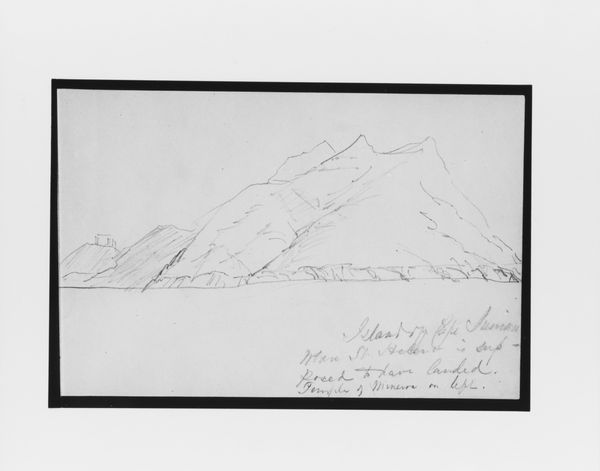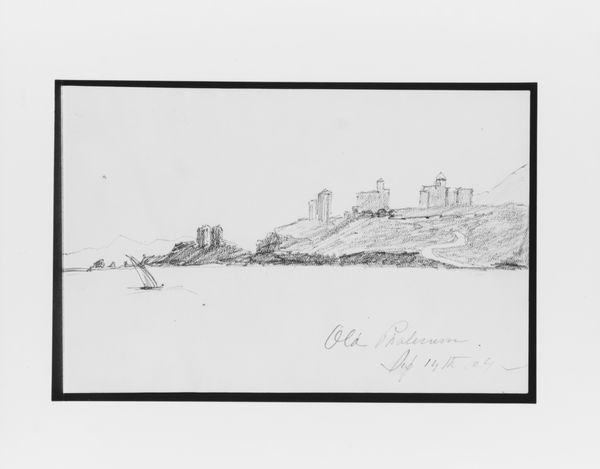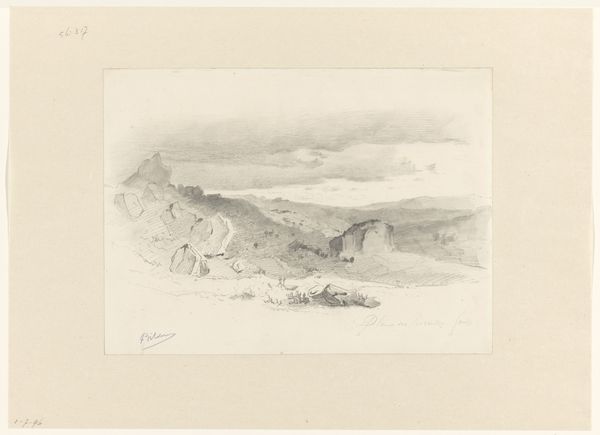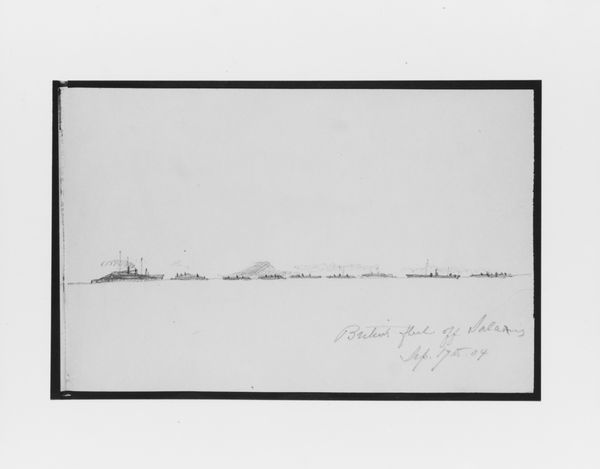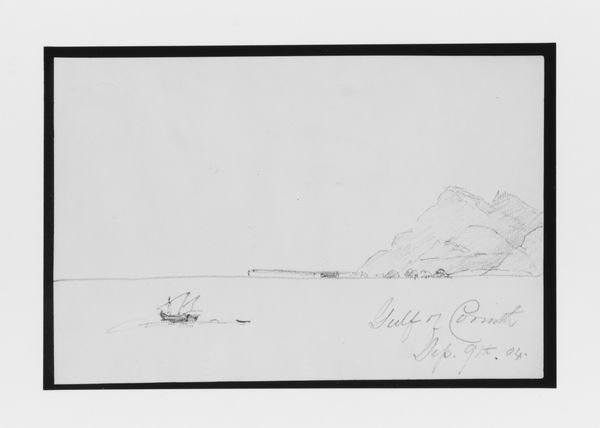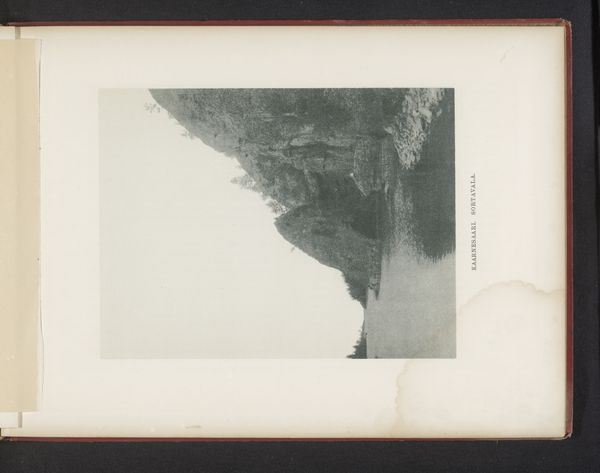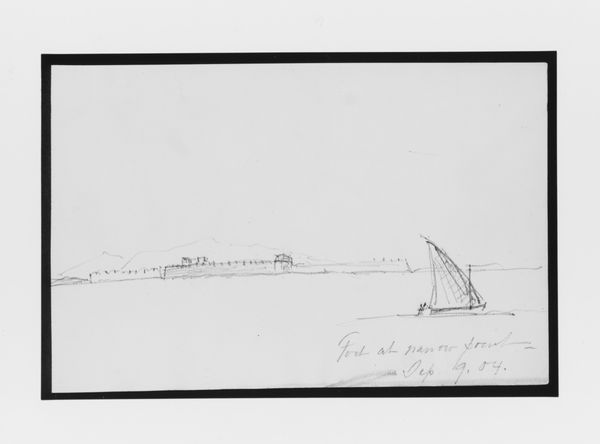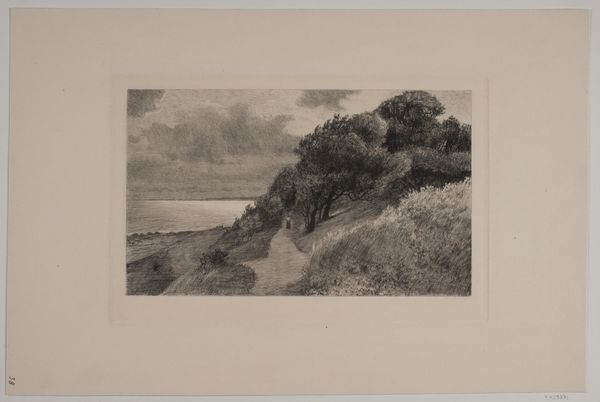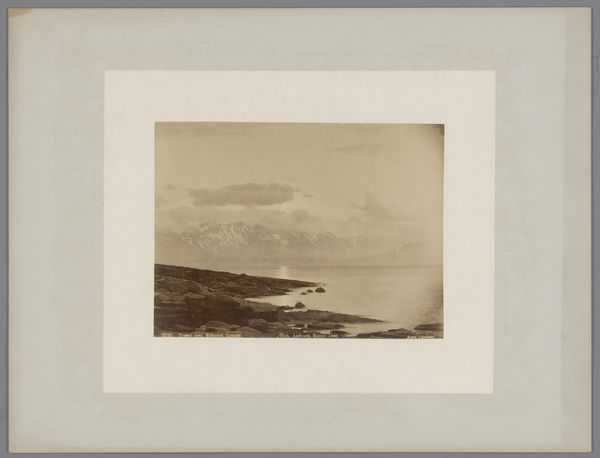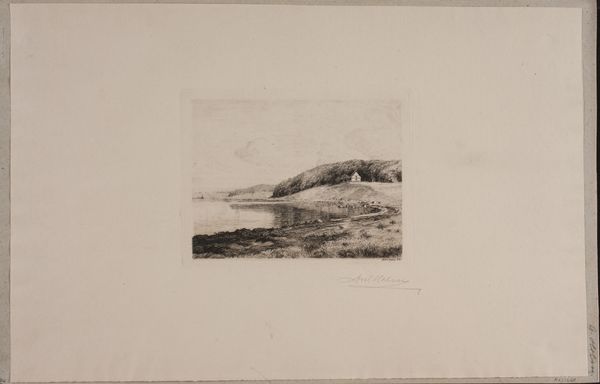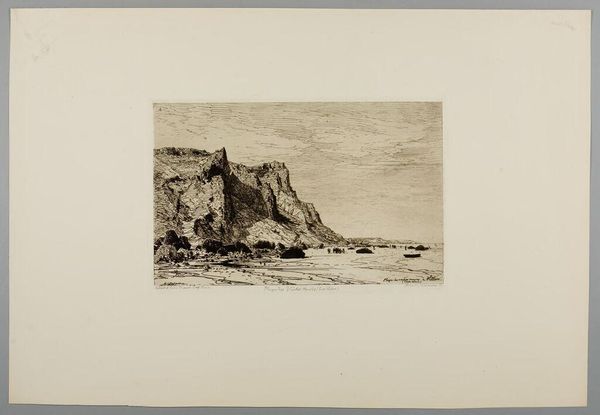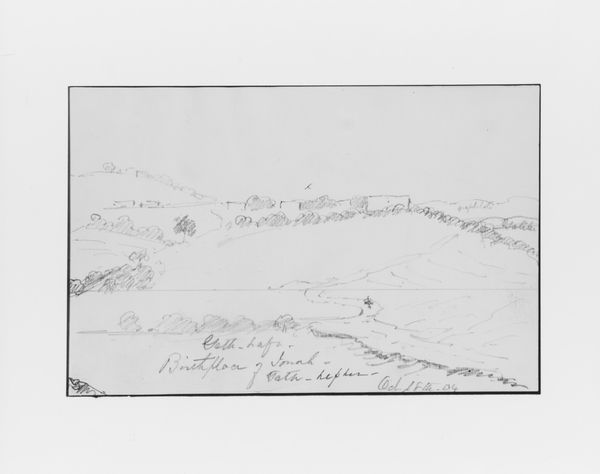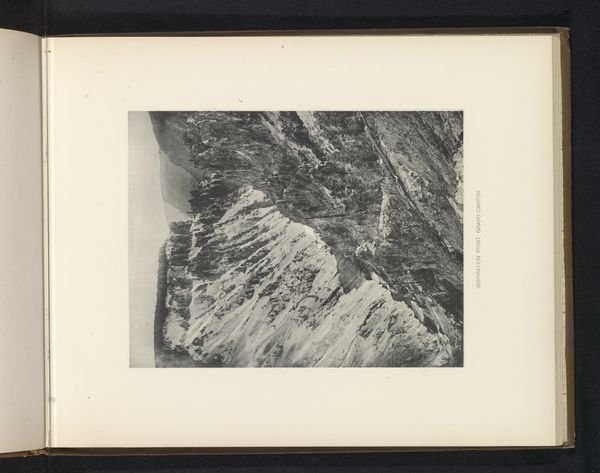
Dimensions: 5 1/4 x 8 1/4 in. (13.3 x 21 cm)
Copyright: Public Domain
Curator: Here we have Mary Newbold Sargent’s pencil drawing, "Temple of Minerva (from Sketchbook)," created in 1904. It is currently held at the Metropolitan Museum of Art. What are your first thoughts? Editor: An interesting tension! It feels like a monument to male aspiration softened by Sargent’s gaze. There's a sense of timelessness here, an echo of classical ideals, yet rendered with a contemporary touch, it has this kind of melancholic atmosphere, and quiet observation. Curator: The neoclassical subject matter is relevant because Sargent was part of a generation engaging with and re-evaluating classical antiquity through art. We should be conscious that it perpetuates notions of ideal societies while ignoring inequalities based on gender, class, and even colonial power structures. It is therefore imperative that we address these realities alongside admiring the landscape, drawing attention to marginalized voices historically excluded. Editor: Indeed, but look at how the symbol of Minerva—wisdom, strategic warfare—is juxtaposed with the natural landscape. This tension between the ordered temple and the wild promontory it occupies—speaks to enduring power struggles, knowledge over nature and reason over chaos, creating such strong symbolism for me. Curator: Yes, and that conflict you note reflects the late 19th and early 20th-century social and intellectual anxieties. Rapid industrialization and changing gender roles were challenging traditional hierarchies and notions of civilization. Seeing it in that historical context can add nuance to our understanding of it. We are able to analyze not only what's represented, but what might have been left unsaid within the drawing itself. Editor: Absolutely. Sargent's careful composition almost whispers about this period— it's an image layered with unspoken stories and tensions. Curator: Exactly! Seeing how this work both reflects and subtly questions its era provides deeper insights than a simple appreciation of its aesthetic value. Editor: Thank you. Thinking of that balance between natural chaos and built society is fascinating! Curator: A lens of historical inquiry transforms this lovely scene into a nuanced narrative on early twentieth-century identities and cultural norms.
Comments
No comments
Be the first to comment and join the conversation on the ultimate creative platform.
